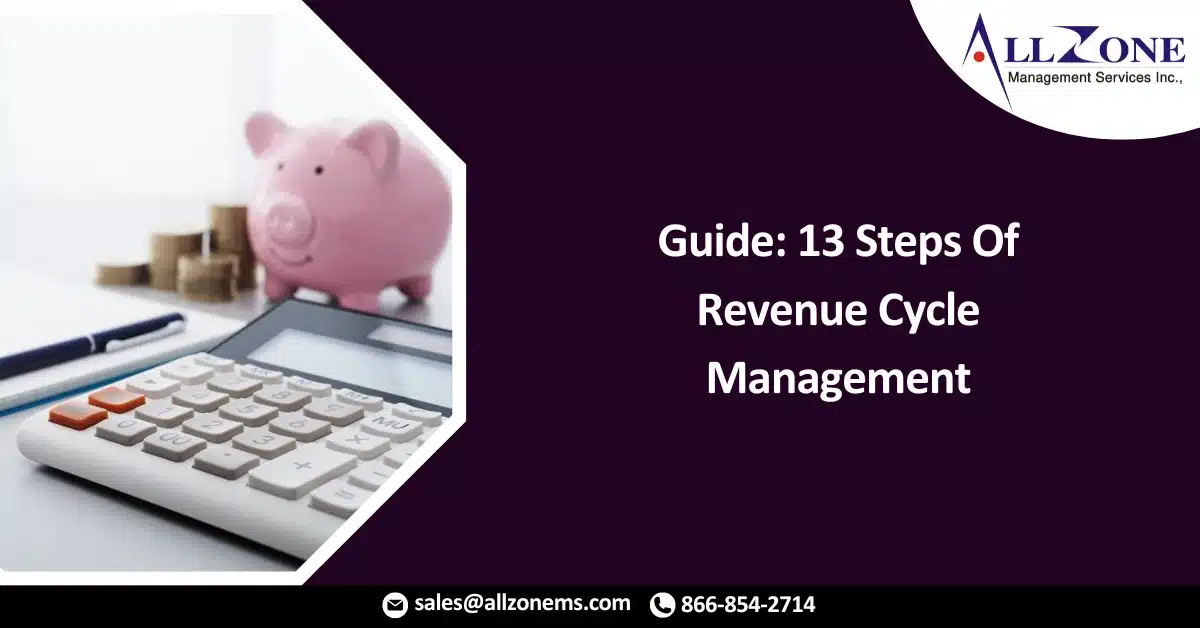In the ever-evolving world of healthcare, revenue cycle management (RCM) plays a crucial role in the success of any medical practice. Efficient RCM ensures timely and accurate payment for services rendered, which can significantly impact the financial health of a practice.
13 Essential Steps for Effective Revenue Cycle Management in Practice 2024
1. Verify Patient Insurance Eligibility
Before any services are rendered, it is essential to verify the patient’s insurance eligibility. This step ensures that the practice is aware of any co-pays, deductibles, or out-of-pocket expenses that the patient may be responsible for.
2. Collect Patient Information
Collecting accurate patient information is crucial for successful RCM. Make sure to obtain complete demographic and insurance information from the patient at the time of scheduling the appointment.
3. Schedule Appointments Efficiently
Efficient scheduling practices can significantly impact RCM. Make sure to schedule appointments in a way that maximizes physician productivity while minimizing wait times for patients.
4. Conduct Pre-Visit Financial Counseling
Pre-visit financial counseling can help patients understand their financial responsibility and reduce the likelihood of unpaid bills.
5. Check for Medical Necessity
Before any services are rendered, make sure to check for medical necessity. This step ensures that the services provided are necessary and will be covered by insurance.
6. Accurately Code Services
Accurate coding is essential for successful RCM. Make sure to assign the correct codes to services rendered to ensure timely payment.
7. Submit Clean Claims
Submitting clean claims is crucial for timely payment. Make sure to double-check all claims before submission to ensure that they are error-free.
8. Monitor Claims Status
Monitoring claims status is essential for successful RCM. Make sure to track all claims and follow up on any denials or rejections promptly.
9. Appeal Denied Claims
Appealing denied claims can significantly impact RCM. Make sure to appeal any denied claims promptly and provide any necessary documentation to support the claim.
10. Post Payments Accurately
Accurate posting of payments is crucial for successful RCM. Make sure to post all payments correctly to ensure that patient accounts are up-to-date.
11. Follow Up On Outstanding Balances
Following up on outstanding balances is essential for successful RCM. Make sure to contact patients with outstanding balances regularly and provide payment options if necessary.
12. Monitor Key Performance Indicators (KPIs)
Monitoring KPIs can help practices identify areas where they can improve RCM. Make sure to track metrics such as days in accounts receivable, clean claim rate, and denial rate.
13. Continuously Improve revenue cycle management process
Continuous improvement is crucial for successful RCM. Make sure to regularly review revenue cycle management processes and identify areas where improvements can be made.
Following these 13 steps can help practices improve their revenue cycle management and ensure timely and accurate payment for services rendered. By implementing efficient RCM practices, practices can improve their financial health and provide better care to their patients.
What’s new for Revenue Cycle Management in 2024?
There are a few new trends to be aware of in RCM in 2024:
- The Rise of Artificial Intelligence (AI): AI is being used to automate many tasks in RCM, such as medical coding and claims submission. This can help providers to improve efficiency and reduce costs.
- The Increasing Focus on Patient Financial Experience: Patients are increasingly demanding a more transparent and convenient billing experience. Providers need to be able to offer patients a variety of payment options and make it easy for them to pay their bills.
- The Growing Importance of Data Analytics: Data analytics can be used to identify areas where the revenue cycle management process can be improved. Providers can also use data analytics to predict trends and make better financial decisions.
How to improve your RCM in 2024
Here are a few tips for improving your revenue cycle management services
- Invest in Technology: There are a number of software solutions available that can help healthcare providers streamline and automate their revenue cycle management process.
- Outsource RCM Tasks: If your practice does not have the resources to manage RCM in-house, you may want to consider outsourcing some or all of the tasks to a third-party vendor.
- Train Your Staff: RCM can be complex, so it is important to train your staff on the latest best practices.
- Track and Analyze Key Metrics: By tracking and analyzing key metrics, you can identify areas where your revenue cycle management process can be improved.
By following these tips, healthcare providers can improve their revenue cycle management process and increase their revenue.

